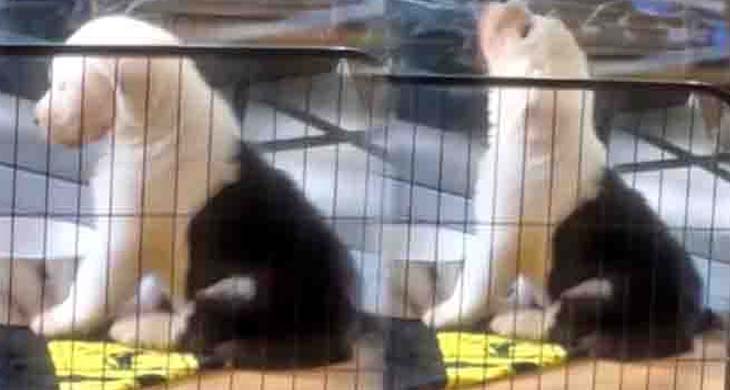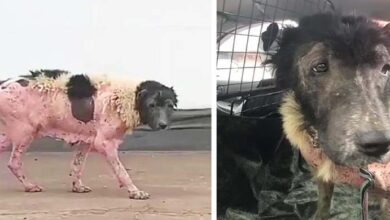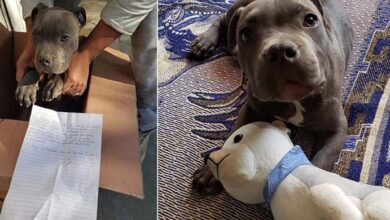Puppy’s Response to Thinking He’s Home Alone Breaks Hearts: ‘His Tears’

Aheartbreaking video of a sad puppy thinking he’s been abandoned by his owners has gone viral on TikTok with over 500,000 views.
@lonco_oldenglishsheepdog Sad times…#dog #doglife #oldenglishsheepdog #sydney #fluffy #sadvibes #puppy #alone #allbymyself ♬ original sound – Lonco 🐾
In the video, Lonco the Old English Sheepdog puppy can be seen sitting sadly by his water bowl, whining and howling. The text read: “throwback…when I thought mum and dad left me alone but were hiding,” while the caption added: “sad times.”
One user said: “Aww, and he’s drowning his tears in his water bowl. That’s just so sad”, while another agreed: “Hiding and taking a video of him. You go over there and you hug and kiss him right now!!!”
Lonco’s owners described as “a little dramatic at times” in the comments. However, some dogs can experience separation anxiety when left alone.
Dogs, and some cats, much prefer it when their humans stay at home with them. Some can be left alone for a few hours, but some pets suffer from separation anxiety when their humans leave. Symptoms can include urinating or defecating in the house, destroying items like furniture or clothing, and barking/howling, to name a few.
“Most dogs with separation anxiety try to remain close to their owners,” reported VCA Animal Hospitals, “follow them from room to room and rarely spend time outdoors alone. They often begin to display anxiety as soon as the owners prepare to leave.”
“If your dog acts in a restless way, excessively barks, howls or salivates, shivers or shakes, or becomes quiet and withdrawn when you go to leave, they may have separation anxiety.”
If your dog does show any of the symptoms of separation anxiety it’s important to rule out medical issues that could be causing the symptoms, such as hormone-related problems, old age, diabetes or neurological abnormalities.
Once you have confirmed the issue is separation anxiety, the American Society for the Prevention of Cruelty to Animals recommends a program of desensitization and counter-conditioning. The society suggests that if your dog starts to show signs of anxiety as you begin the ritual of leaving the house, such as picking up your keys or putting on your coat, start doing these activities when you’re not leaving. This may stop your dog associating these activities with your absence.
It also recommends planning short, timed absences. “The main rule is to plan your absences to be shorter than the time it takes for your dog to become upset… Gradually increase the length of time you wait on the other side of the door, out of your dog’s sight. You can also work on getting your dog used to predeparture cues as you practice the stay. For example, ask your dog to stay. Then put on your coat, pick up your purse and go into the bathroom while your dog continues to stay.”




